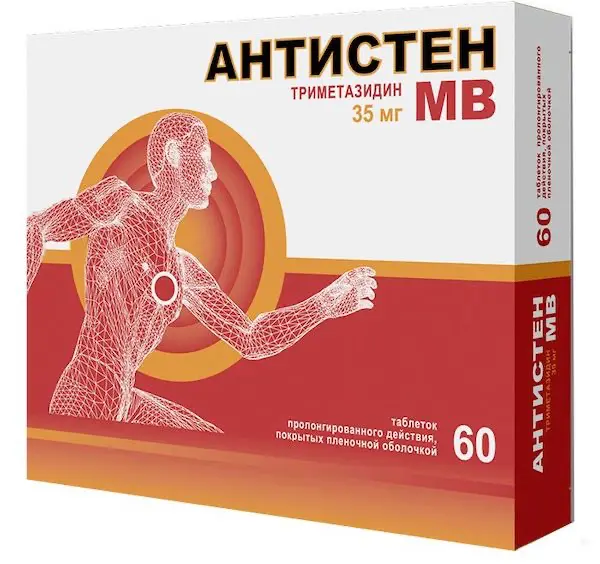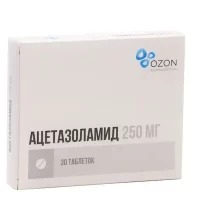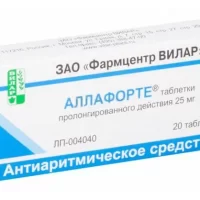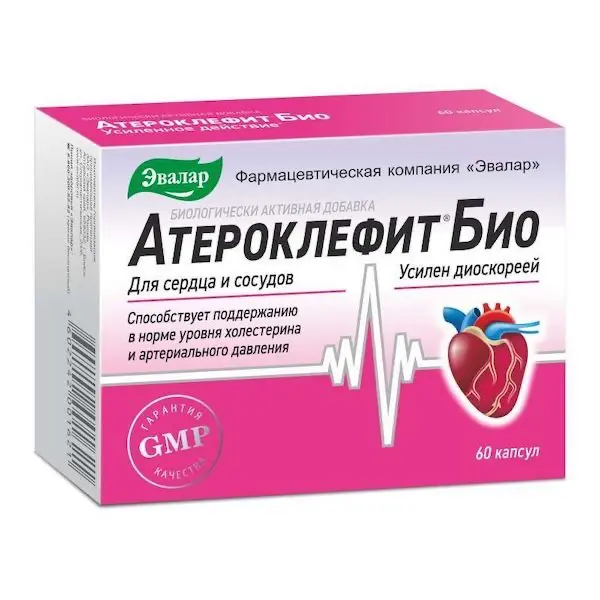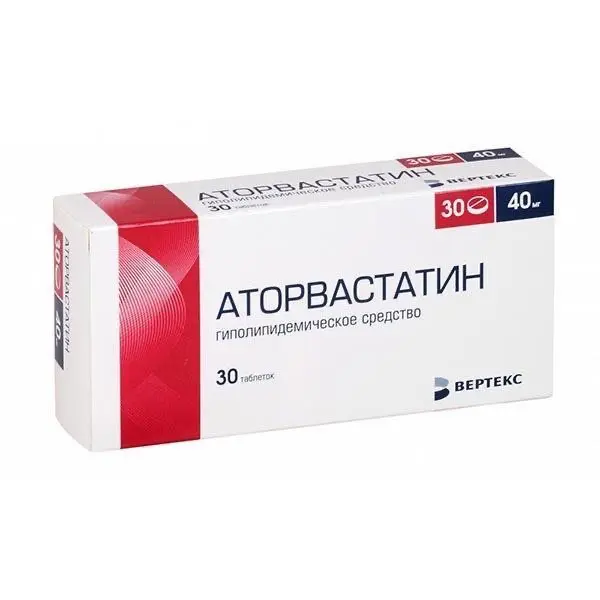Description
Antisthene Pharmacodynamics
It has an antihypoxic effect.
Directly affecting cardiomyocytes and brain neurons, the drug optimizes their metabolism and function. Cytoprotective effect is due to increase of energy potential, activation of oxidative decarboxylation and rationalization of oxygen consumption (increase of glycolysis and blockade of fatty acid oxidation).
Trimetazidine maintains myocardial contractility, prevents a decrease in intracellular adenosine triphosphoric acid (ATP) and phosphocreatinine. Under acidosis, it normalizes the functioning of membrane ion channels, prevents the accumulation of calcium and sodium ions in cardiomyocytes and normalizes the intracellular content of potassium ions.
Reduces intracellular acidosis and increased phosphate content caused by myocardial ischemia and reperfusion. Prevents damaging effects of free radicals, maintains the integrity of cell membranes, prevents neutrophil activation in the ischemic zone, increases the duration of electrical potential, reduces the output of creatine phosphokinase (CPK) from cells and the severity of ischemic myocardial damage Trimetazidine reduces the frequency of angina attacks, reduces the need for taking nitrates, after 2 weeks of use increases tolerance to exercise, reduces sudden changes in blood pressure (BP) It reduces dizziness and tinnitus of ischemic etiology. In case of vascular eye pathology it restores functional activity of the retina.
Indications
Coronary heart disease: prevention of angina attacks (in combination therapy).
Cochleovestibular disorders of ischemic nature, such as dizziness, tinnitus, hearing disorders.
Chorioretinal vascular disorders.
Contraindications
– Hypersensitivity to any component of the drug;
– Renal insufficiency (CK rate less than 15 ml/min);
– Significant liver function abnormalities;
– Age under 18 years (efficacy and safety have not been established).
Pregnancy and lactation:
Animal studies have shown no teratogenic effect; however, due to the lack of clinical data on the safety of the drug use during pregnancy, the risk of fetal malformations cannot be excluded. The use of the drug in pregnancy is contraindicated.
It is unknown whether ANTISTEN MB is excreted with breast milk. If it is necessary to use ANTISTEN MB during lactation period, it is necessary to decide whether or not to stop breast-feeding.
Dosage and administration method
- Orally, with meals.
- Antisten MB is prescribed 1 tablet 2 times a day (morning and evening).
- The course of treatment – as recommended by the doctor.

